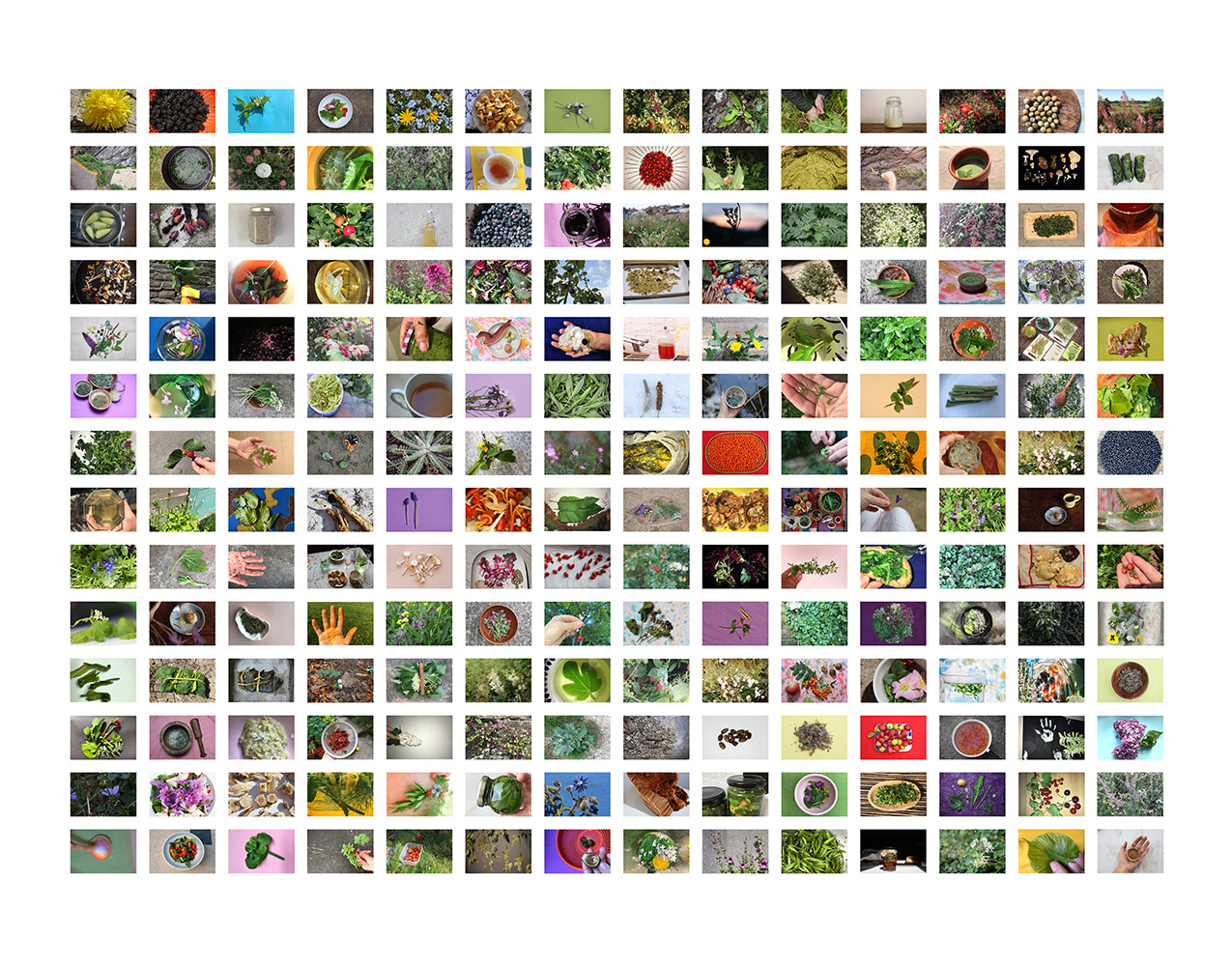
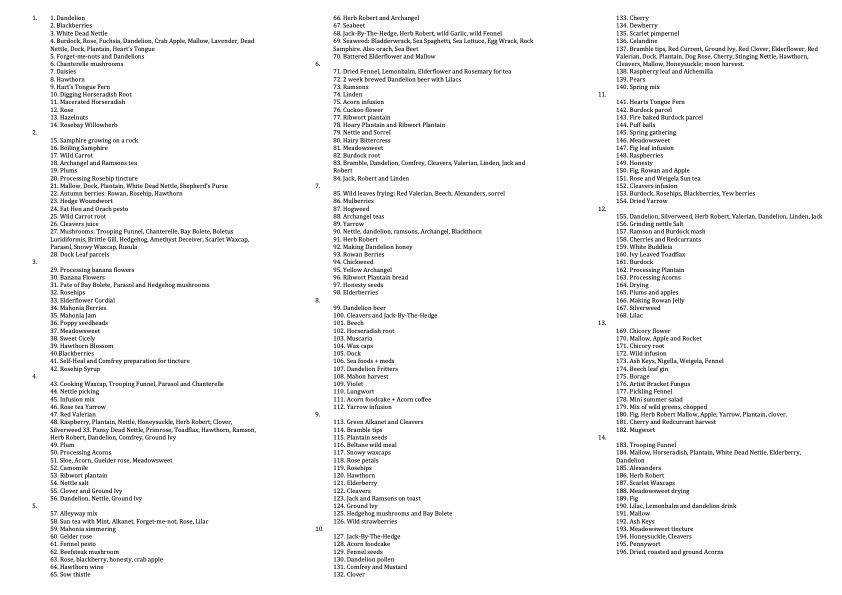
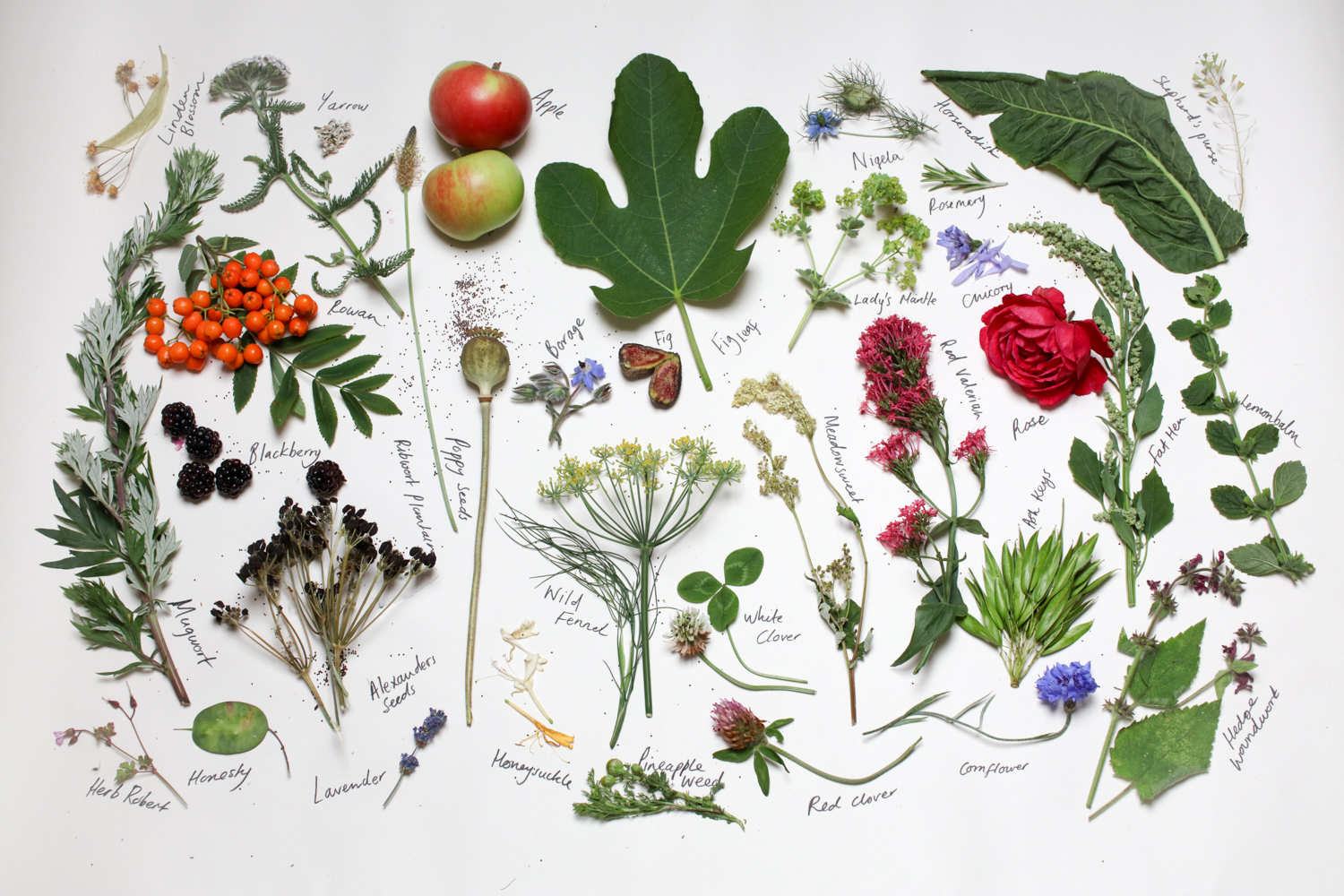
Trowbridge - summer, 2020

Trowbridge - spring, 2020

Tow Path Edibles 3 - summer, (Stern Hood Curtains), 2019
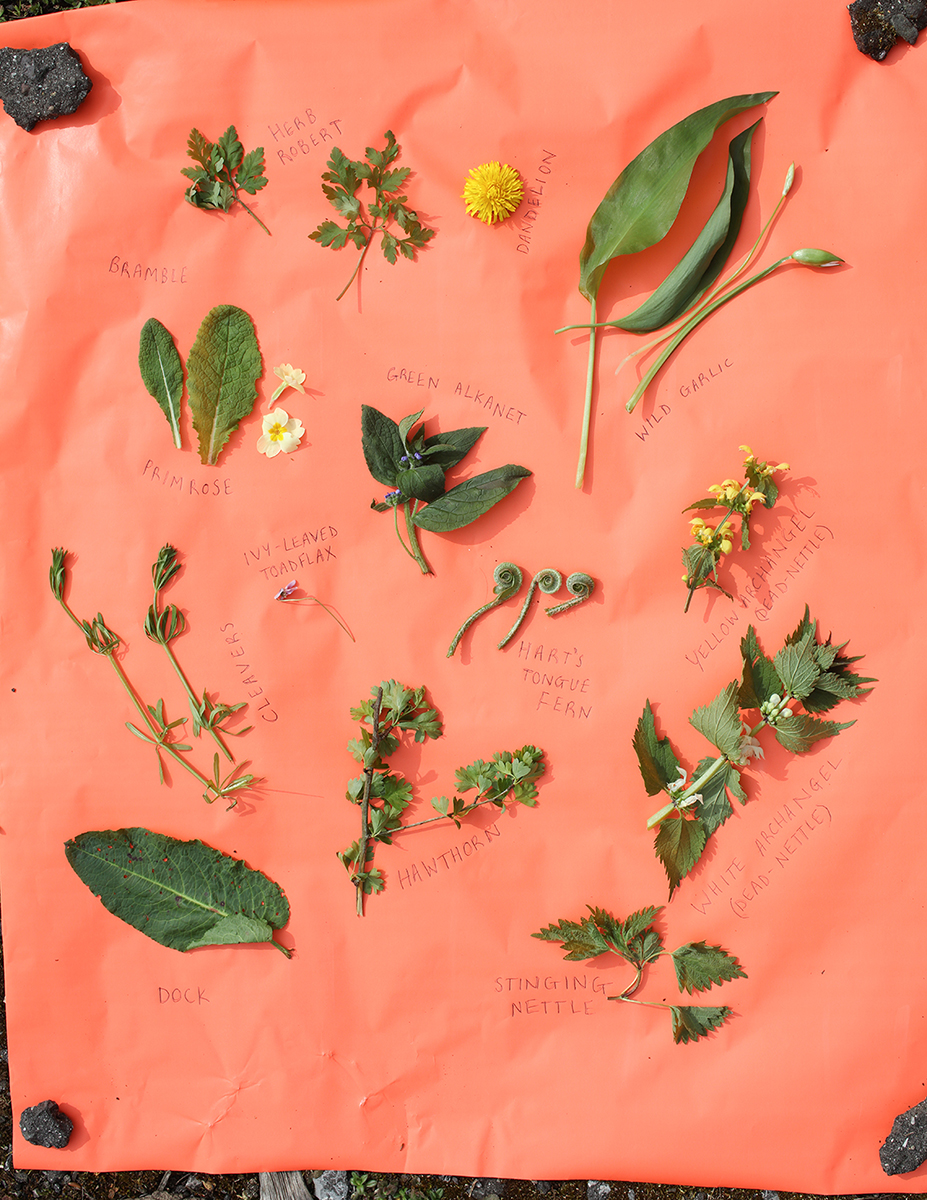
Tow Path Edibles 2 - spring, (Stern Hood Curtains), 2019

Tow Path Edibles 1 - winter, (Stern Hood Curtains), 2019
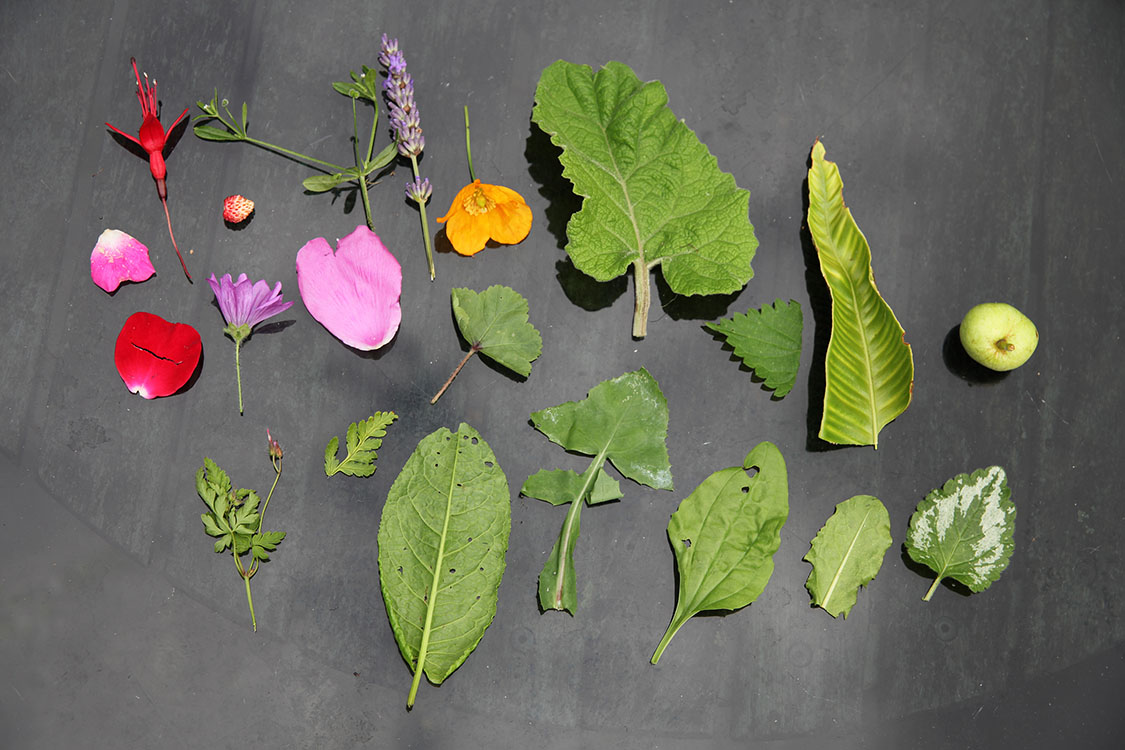
South Brent Garden, 2016

Rigg Approach to Stratford Studio, 2016
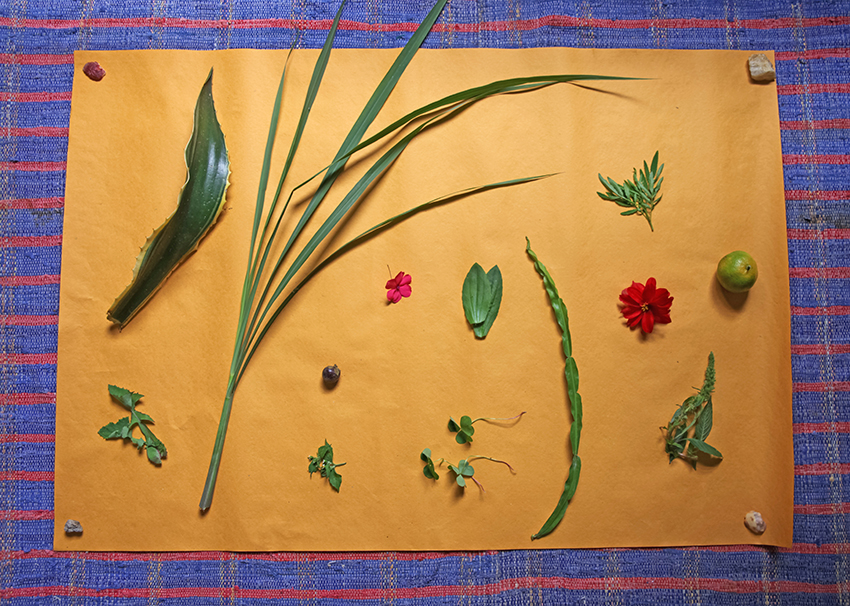
Itapeva Track, 2016

South West Coast Path, 2016
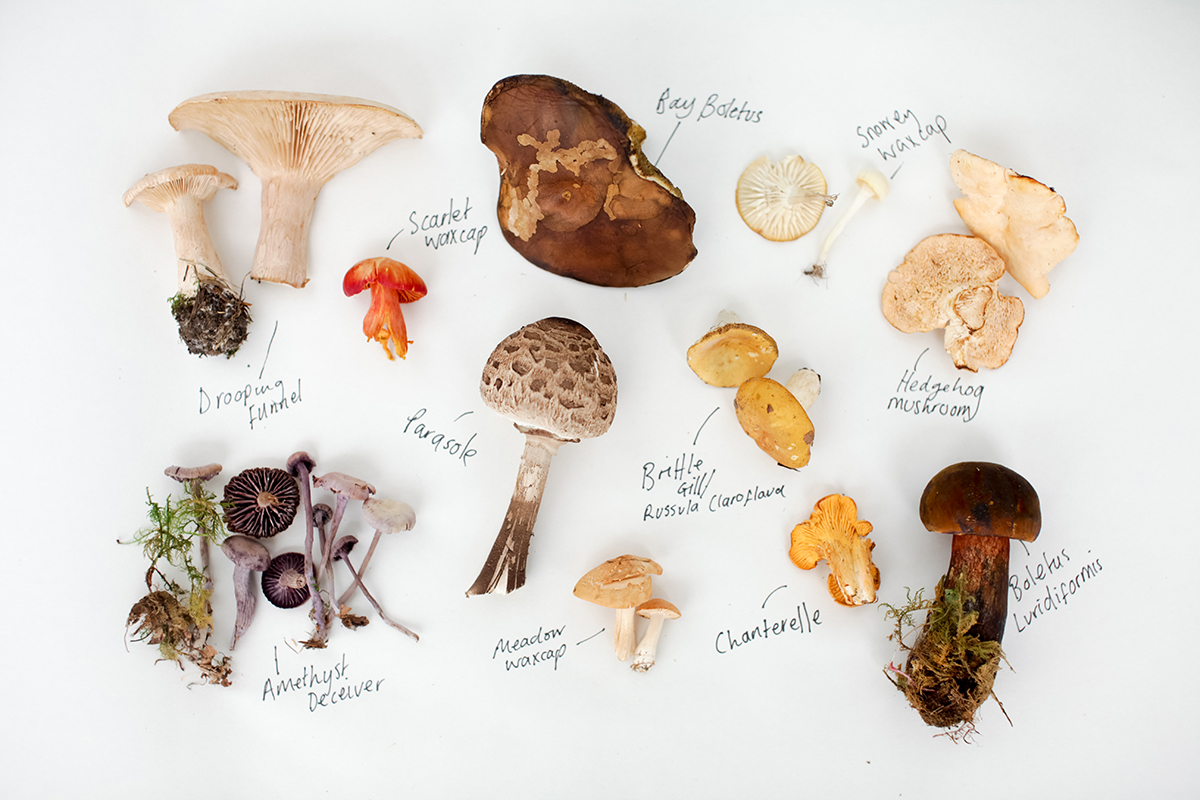
There Are No Firm Rules, 2015
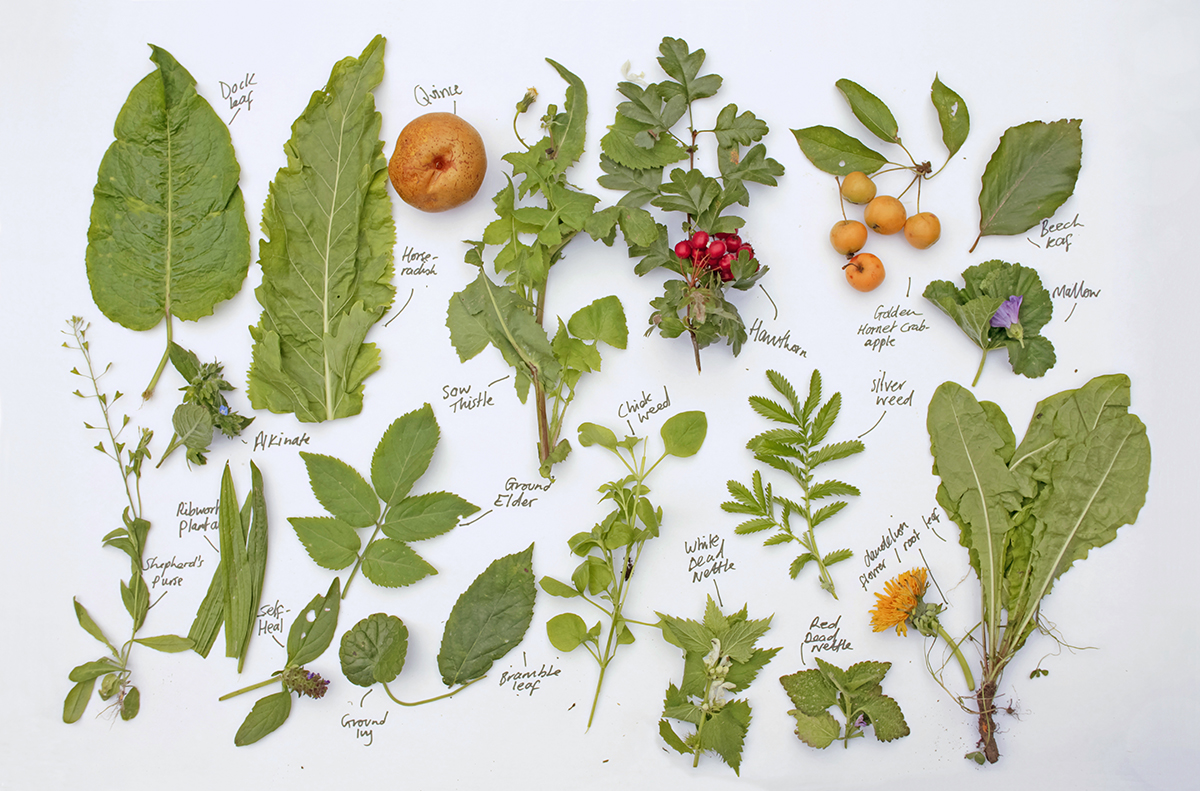
Wisbech Walk, 2014
DIY foraging notes:
Some suggestions for anyone who wants to start learning about wild food. I urge you to do your own investigations and not to take any chances. I should also say that my academic training has been in the field of ‘art’, so I am not coming at this from a formal, scientific or medical background, this is just related to my personal learning.
- Get/borrow ID books (nature books which depict wild plants). I use illustrated and photographic books together because it is not always clear from one image as plants look different in different contexts and seasons. Look for the books with good clear illustrations or photos., they can easily be found second hand.
- Get/borrow wild food books (the books which tell you which plants are edible and how you can eat them). A few basic books for UK plants are: Food For Free – Richard Maybe, Wild Food, A Complete Guide For Foragers – Roger Philips, Hedgerow Medicine – Julie and Matthew Bruton-Seal, A Prisoners Herbal – Nicole Rose. There are interesting older books like: A Modern Herbal – Mrs M. Grieve and Culpepper’s Complete Herbal.
- Poisons. There are poisonous plants, they can kill you e.g. hemlock (which could be mistaken for cow parsley or sweet cecily), hemlock water dropwort (which might be mistaken for lovage or parsley), cuckoo pint (leaves could maybe be mistaken for sorrel or garlic), giant hogweed (which is easily mistaken for regular hogweed), fox glove (which, before flowering could be mistaken for plants in the borage family). These are not the only ones, never take a chance if you are not sure.
- The internet is good especially if you have no idea you can type in a description, but there is conflicting information and you need to check sources. I have seen mis-labelled plants online, at least with books you know they have been researched.
- Plant ID phone apps are interesting and useful. I think that ultimately I want this information inside my head and to be able to really recognise something.
- A bag made of natural fabric is better for collecting. Or a basket so the plants don’t get crushed, and if you are collecting mushrooms the spores can drop through the basket (its important for the soil + the fungi).
- For some plants/fungi a knife or scissors is helpful.
- It is easier, especially at the start, to be shown things in person, physically identifying with someone else who knows (because then you can be sure you’ve got it). If you don't know anyone who can show you, there are courses (they can be expensive though), or maybe start an informal group working together.
- You can learn on your own and correctly identify plants, but its good to go slow and be careful. Maybe start with a couple of things, maybe plants you already recognise and are known to be reliably safe (eg. nettle, dandelion).
Then pick a couple more; plants you are drawn to, but are common wild edibles: perhaps herb robbert, cleavers, white dead nettle or ramsons (wild garlic), fennel or elderberries. Try and learn them well and recognise them repeatedly in different contexts.
- Make sure you have ruled out similar looking plants which are poisonous before consuming anything.
- When you are learning a new plant, spend time with it. Look in detail at the leaves and texture, smell it: as is, and then crush some to sniff. The smell will really help to recognise the plant.
- It is very important not to over harvest. Just take a little. Do not pick all of a plant and if there is only a small amount: The ecosystem needs them, without them bees will die (for example) we are already putting a lot of pressure on it. If some municiple destroyer of plants is out to clear an area of ‘weeds’, sure, harvest the lot. But where possible try and explain the plant's value and uses first?
- If you eat something new don’t eat too much at once, even if you are sure on the ID. Even when you are sure a plant is edible; we all have different bodies and some people are allergic to things which are fine for others. Some things are very bitter, some things taste mild but they still contain a lot more minerals and nutrients and can affect your mood and energy.
- Mushrooms are incredible but with extreme caution. I still only feel safe about eating mushrooms I have initially learnt to ID with someone else. Although there are some which are pretty easy to identify from books (eg hedgehog mushrooms) as they are not very similar to anything dangerous. There are thousands of mushrooms and a lot of them look similar. Do not eat any mushroom unless you are completely sure what it is.
- Don’t pull things up by the root. Unless there is a lot of it and it's the root you’re after. In this case it is not bad for the plants (like when you thin out carrots in a veg patch). Plants do need you to eat their leaves and berries, brush against them and help disperse the seeds, but just don’t eat them all. The birds need berries, other animals need nuts, and animals will plant new trees (when they store nuts in holes).